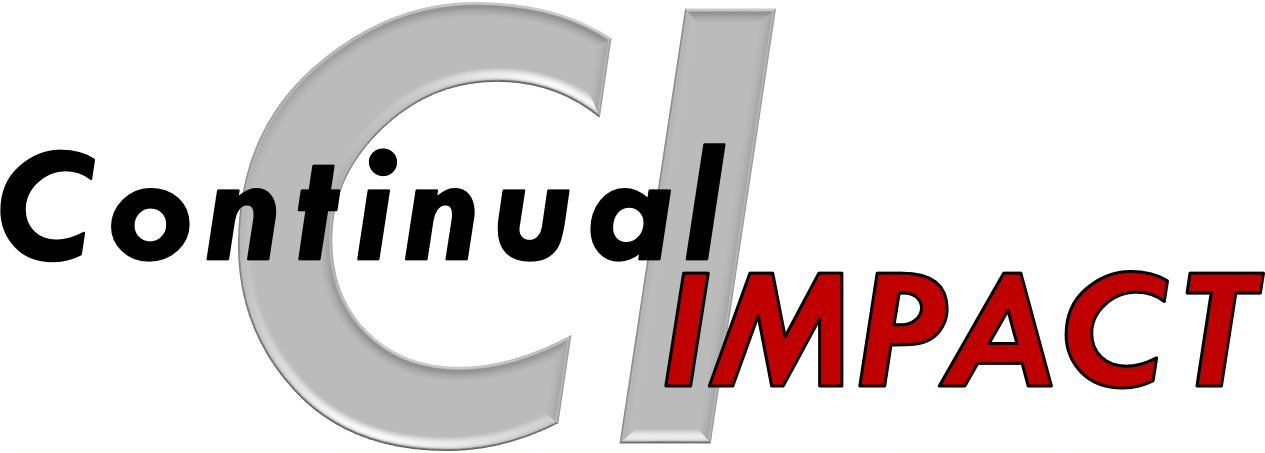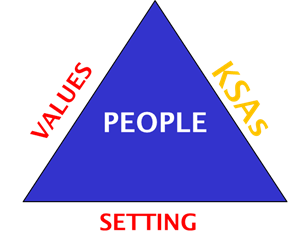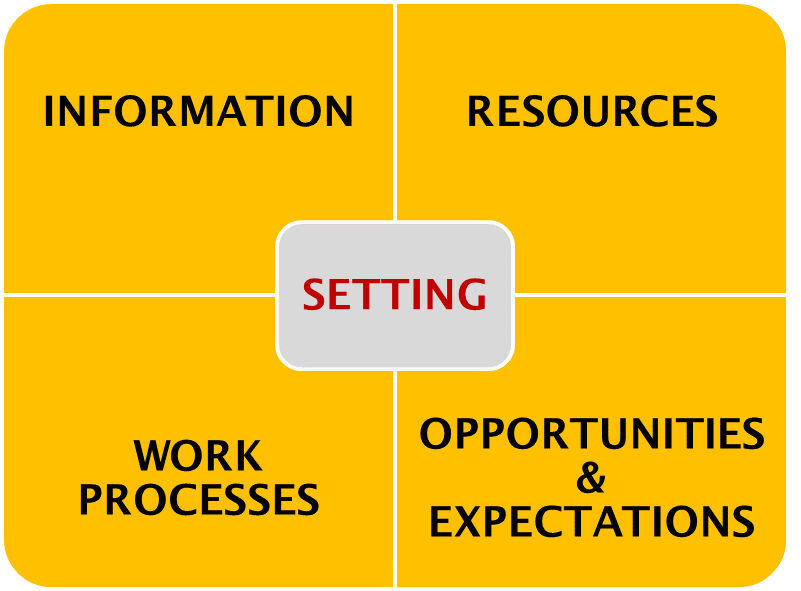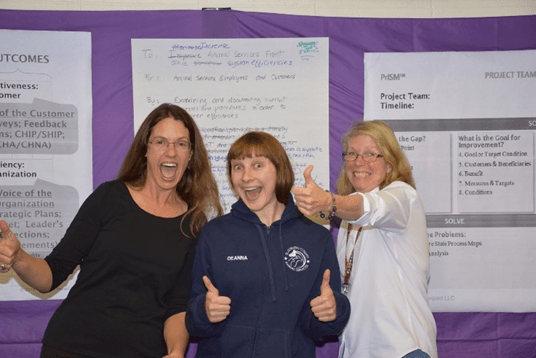Enable the People by Creating the Setting
PEOPLE: The Most Important Element in a High-Performing Organization
Without People, your high-performing organization does not exist –your people make the difference! In the previous article, we covered the 6 elements necessary to create a high-performing organization – PEOPLE, LEADERSHIP, FOCUS, LEARNING, IMPLEMENTATION, AND METHODS. An organization relies most importantly, however, on unlocking the capacity of its PEOPLE.
The people in high performing organizations have a unique set of qualities:
- Aligned to the Mission of the organization and creating benefits to all its stakeholders.
- Energized by the organizational and personal success they see possible.
- Function as teams within and across the organization to achieve results and improve performance by identifying improvement areas, solving problems, and learning.
- Capable , with each individual knowledgeable and proficient, in executing their core responsibilities and in creating improvement.
- Pioneering and innovative , internally driven to achieve the previously unachievable, probe new opportunities, and create new benchmarks of accomplishment at the personal, company, and industry levels.
- And, people are supported by a leadership that believes in the capacity of people and creates an environment that enables their performance! [1]
- Aligned to the Mission of the organization and creating benefits to all its stakeholders.
- Energized by the organizational and personal success they see possible.
- Function as teams within and across the organization to achieve results and improve performance by identifying improvement areas, solving problems, and learning.
- Capable , with each individual knowledgeable and proficient, in executing their core responsibilities and in creating improvement.
- Pioneering and innovative , internally driven to achieve the previously unachievable, probe new opportunities, and create new benchmarks of accomplishment at the personal, company, and industry levels.
- And, people are supported by a leadership that believes in the capacity of people and creates an environment that enables their performance! [1]
So, who are the “right people” and what do they need to be successful? What core values , knowledge, skills and abilities (KSAs), and setting are needed for people in an organization that is based on the following performance features :
- Focused on maximizing value to customers, eliminating waste in all work processes, and achieving extraordinary results for its stakeholders
- Sees success through enabling or helping all its stakeholders
- Competes through the excellence of its products and services
- Is powered by teamed people who work together to a common goal
- Uses continual improvement and learning, based on data and information to guide problem solving, to achieve success
The Core Values Needed for People in a High-Performing Organization
Note that core values are simply the principles of conduct people abide by as they pursue the organization’s purpose. They have no “moral” underpinning however they often are a conscious choice on the part of an individual and need to be considered in hiring, onboarding, and advancement practices. The desired core values for people in a high performing organization can be identified by analysis of the above performance features using social science research [2] . They include the following:
- Intrinsically motivated: has a purpose greater than oneself; acts with integrity to that purpose
- Teams with others; respects others; seeks to involve and understand the perspectives of stakeholders (empathy)
- Self-starting and sustaining; accountable for performance
- Pioneering: challenges the status quo and strives for perfection using fact-based information
- Persistent desire to master the skills necessary to produce success; esteems ongoing learning and competence
- Intrinsically motivated: has a purpose greater than oneself; acts with integrity to that purpose
- Teams with others; respects others; seeks to involve and understand the perspectives of stakeholders (empathy)
- Self-starting and sustaining; accountable for performance
- Pioneering: challenges the status quo and strives for perfection using fact-based information
- Persistent desire to master the skills necessary to produce success; esteems ongoing learning and competence
What People Need to Know: Knowledge, Skills, and Abilities
Certainly, one of the things people need is competence in the knowledge, skills, and abilities (KSAs) to fulfill their role. In addition to the technical KSAs required to fulfill their role, working in a culture of high-performing continual improvement requires additional competencies [3] . These enable each member to continuously improve their own performance, the effectiveness and efficiency of their work process, and the organizations’ services and products; self-manage their efforts, coordinate their efforts with others, and enable the performance of others including sharing learning, team membership, and leadership.
This leads to a set of core competencies and skills and the basis of a training curriculum for the organization:
- Working with Others active communication [4]
- Goal setting
- Measurement
- Information-based problem solving and decision making
- Value & Waste detection
- Learning from performance
- Teaching and coaching others
- Action planning
- Implementing solutions and continually improving
Note that these are for all members of the organization from the board room to individual contributors!
Another necessary component of helping people succeed and a characteristic of high-performing improvement organizations is a setting that enable people to perform. Deming, in his collective works covering “profound knowledge” and “14 management points” [5] , reinforced the need for leaders to enable people’s success by
- Setting the focus on continual improvement
- Knowing the work (process) they supervise
- Understanding the sources of improvement
- And enhancing people’s capabilities so that they can succeed
What is this setting or environment that help people to succeed and leaders help to create?
- Do people have the information and data needed to align with the organizations’ direction and activities? Understand the performance of their work process, their own performance?
- Are resources (information, material, equipment, space) needed to perform and improve their process available?
- Do reliable work processes with standardized work exist that can produce the expected output?
- Finally, are expectations clear with goals identified and measures available to provide feedback and guide improvement?
Are the expectations reasonable? Is there a real, practical, and operating system that provides opportunities to improve performance?
How is your organization doing with people and the core values, KSAs, and setting needed for success in a high performing organization?
Next time, let’s take a deeper look at another element of a High Performing Improvement Culture: LEADERSHIP
[1] Adapted from “The High Performing Learning Organization”; Raphael L. Vitalo, James. S. Byron, Patricia V. Bierley, and Christopher Holmberg
[2] Some of the relevant social science research includes: Bandura (1994; 1997); Carkhuff (1969; 1983) among many others
[3] See “Building a Lean Training Curriculum”; http://www.continualimpact.com/customer-resources/papers
[4] https://www.continualimpact.com/wp-content/uploads/2017/04/Working-with-Others-Course.pdf
[5] See “Deming Revisited”; https://www.continualimpact.com/wp-content/uploads/2015/06/deming_revisited-Vitalo.pdf
[6] The High Performing Learning Organization; Raphael L. Vitalo, James. S. Byron, Patricia V. Bierley, and Christopher Holmberg





